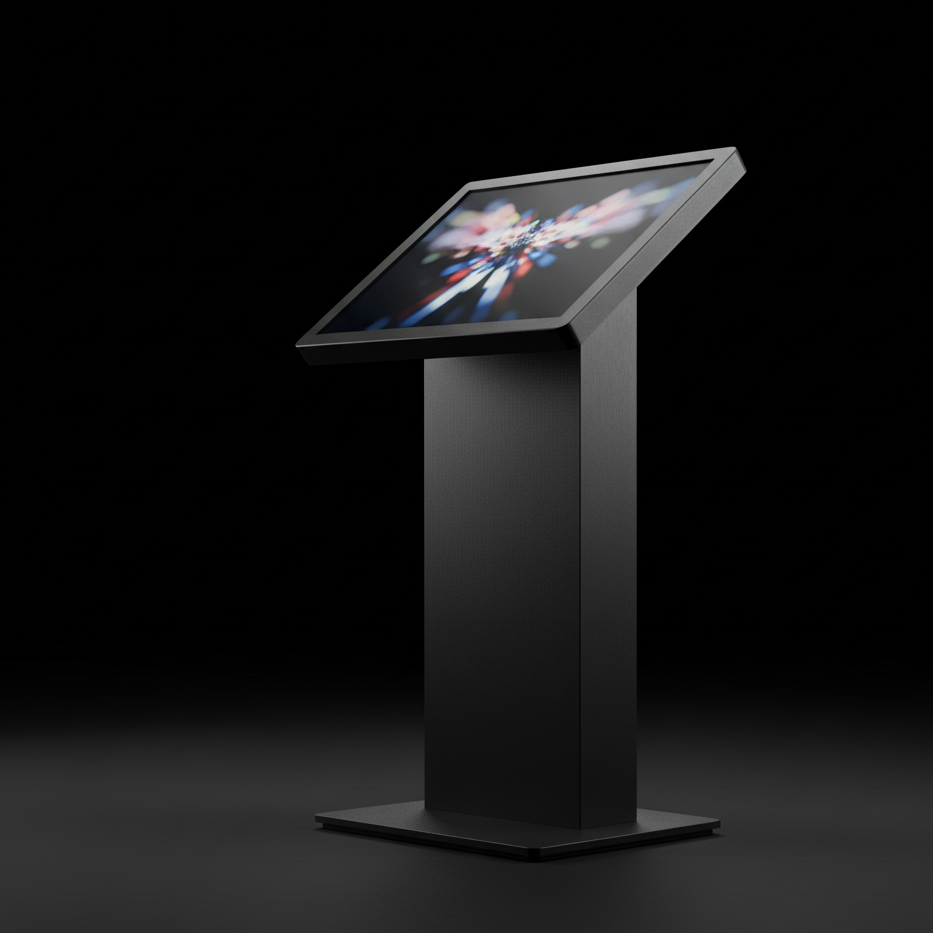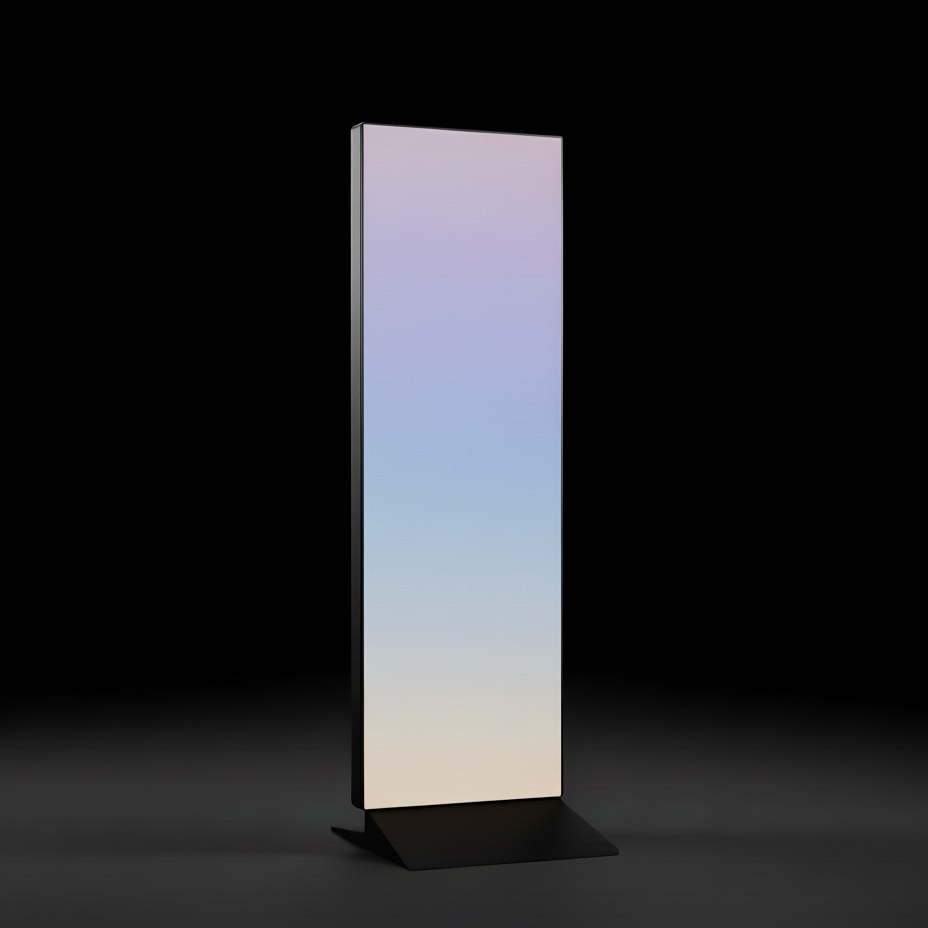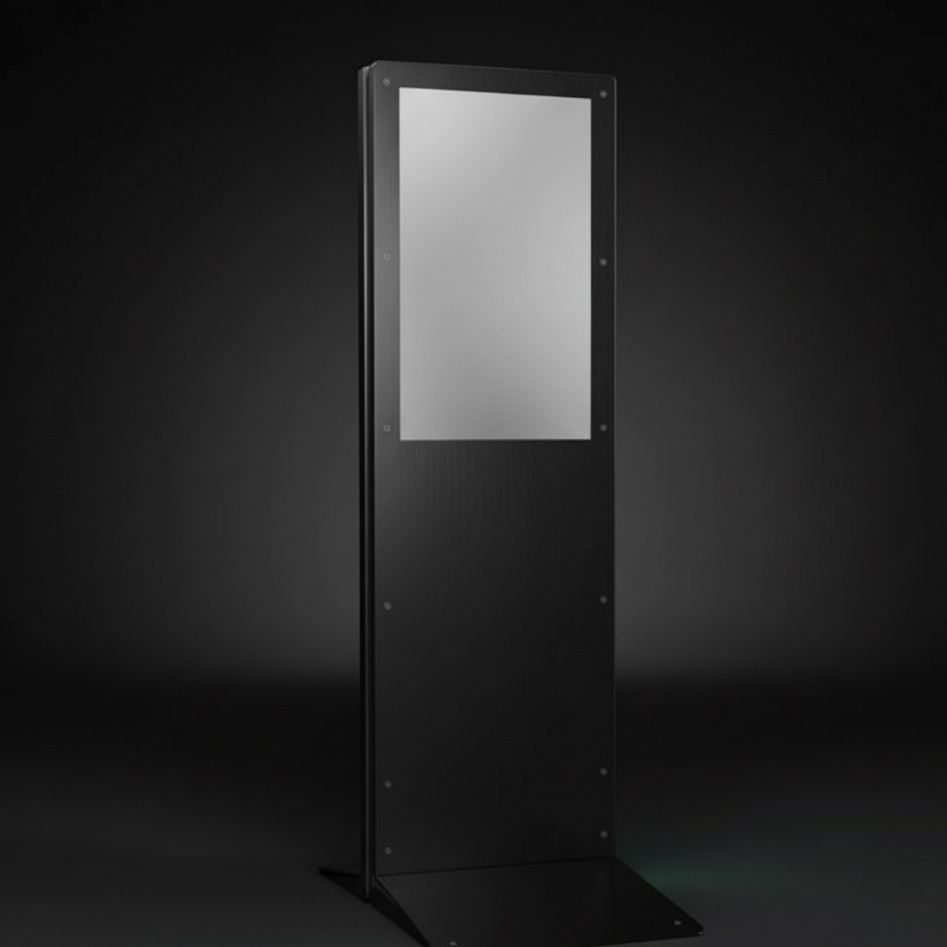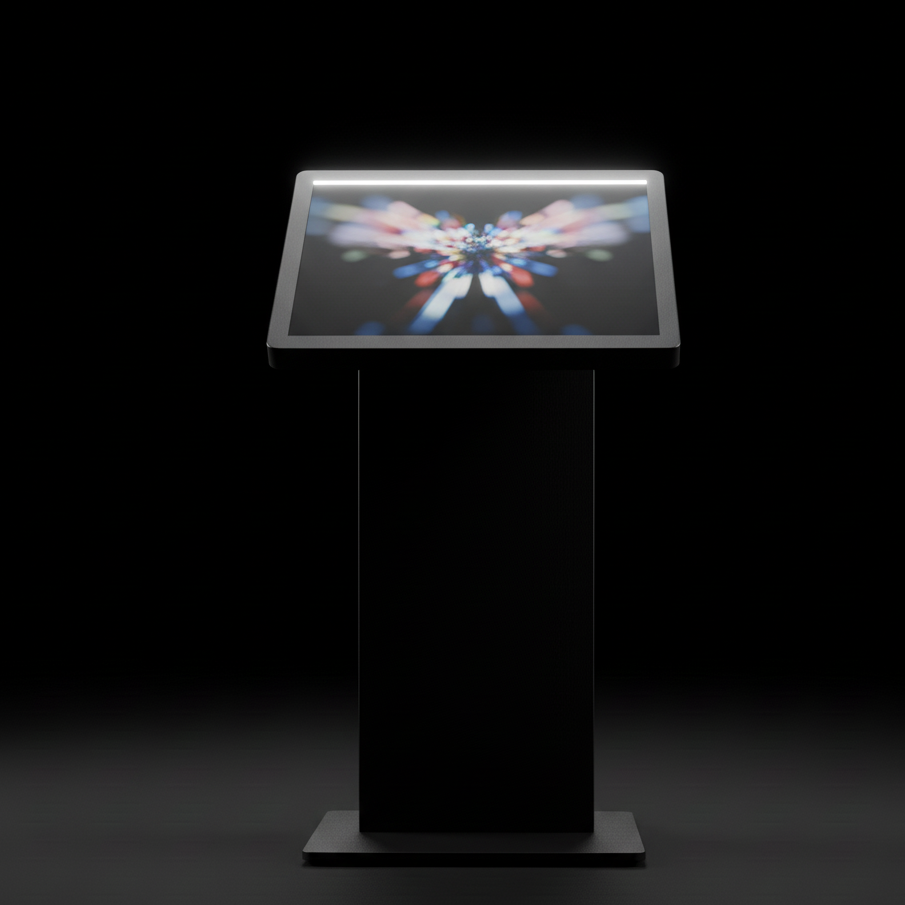



Z-Kiosk
Z-Kiosk is a family of digital totems designed for continuous operation and seamless integration in receptions, retail floors, museums, hospitality, campuses, and public spaces. A slim, monolithic silhouette with softened edges and hidden technical details turns the display into a piece of contemporary furniture that communicates clearly without visual noise.
The body is made of powder-coated steel and aluminum with serviceable panels, a stable anti-tip base, and fully concealed cable routing. Airflow is engineered to keep electronics and screen thermally stable while remaining quiet. Access for maintenance is simple and secure from the front or the back, with lockable doors and modular components for fast replacement. Proportions remain elegant in both compact and large formats, and the glass front runs full height for a clean, architectural reading.
The range covers indoor and outdoor versions, single- or double-sided setups, portrait or landscape orientation, and touch or non-touch interaction. High-brightness options support window displays and sun-lit atriums. Screen sizes typically span from 43″ to 86″, with custom dimensions available to suit site constraints and viewing distances.
Surfaces combine metal in neutral palettes with tempered safety glass; anti-glare treatments are available when needed. For premium areas, the kiosk can be finished with solid-surface cladding, technical woods, or acoustic textiles. Brand integration is handled through subtle framing, engraving, serigraphy, and light accents that respect the core geometry.
Z-Kiosk can be freestanding or mechanically anchored. Power is organized inside the plinth with a master switch and protections, and a dedicated technical bay houses media players, routers, readers, or sensors while preserving clean cable paths to the screen.
In corporate lobbies it enables visitor orientation, meeting displays, and safety messaging. In retail it becomes a window storyteller, an interactive catalog, or a click-and-collect touchpoint. In cultural venues it guides wayfinding and ticketing while hosting rich narratives. In hospitality and healthcare it supports self check-in, service information, and dynamic signage. In public spaces it carries territorial info, events, and civic campaigns with a consistent visual language across sites.


